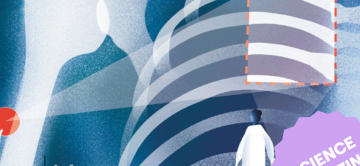Within the European Economic Area, free movement of goods is a central force considered to increase competition and bring consumer benefits. Pharmaceutical drugs are no exception, and trade across countries is fully legal. However, drug pricing remains a national competence, and cross-country differences are substantial. As a result, there has been an increase in parallel trade, estimated at €5.5 billion in 2012, with highly heterogeneous national market shares reaching up to 25% in some countries.1 Parallel trade of pharmaceuticals is common in a handful of European countries, including important markets like Scandinavian countries, Germany, and the Netherlands. Cross-country price differences of medicines can be as large as 300% within Europe, driven by regulatory caps or strict government rules for price setting. Differences in price regulation depend on the aggressiveness of each member-state's authorities in negotiating with manufacturers (Kyle 2007). Not surprisingly, these price differences result in parallel imports of pharmaceuticals by high-price countries from low-price countries; i.e. drugs are bought in Eastern or Southern European countries and resold in Northern European countries (Kyle 2011). Even though there is significant price dispersion across EU countries, Ganslandt and Maskus (2004) report that parallel imports might have led to a reduction in drug prices in the order of 12-19% for drug segments subject to parallel imports entry in Sweden. At the same time, there are large variations in parallel import penetration across otherwise similar countries. These differences seem to have a clear link to regulation governing margins at the pharmacy and domestic supply level (Kanavos et al. 2004, Kanavos and Vandoros 2010).
Though essentially the same product, direct and parallel imports are potentially differentiated by trade name, appearance, packaging, and source of origin from the consumer point of view. Differentiation in appearance and specification across countries has been linked to attempts to reduce the scope for parallel trade (Kyle 2009, 2011).
Parallel imports create an alternative upstream supply for pharmacists, which may have significant implications for the distribution of surplus in the market. In the case of prescription drugs under patent, the monopoly rights of the manufacturer allow them to extract consumers' willingness to pay when setting prices either directly to the market or when negotiating prices with governments. Past research has shown that innovation is indeed elastic to this reward (Acemoglu et al 2004, Dubois et al. 2015). If pharmacies or parallel traders manage to extract a large share of the monopoly rent of manufacturers, the innovation incentive may be inefficiently reduced.
In a recent paper, we (Dubois and Saethre 2020) show how parallel imports capture substantial market shares by retailers restricting the supply of less profitable products to increase purchases of more profitable ones. Retailers trade off foreclosing access to lower margin products and staying attractive to consumers. Although parallel and direct imports are the same drug, some consumers may prefer the direct import variety due to aversion to products that have been traded and transported across intermediate countries from their production site.
Through counterfactual simulations, we find that parallel imports allow retail pharmacy chains to capture a much larger share of industry profits than would otherwise be the case, particularly at the expense of the manufacturer. In the atorvastatin market (patented and marketed by Pfizer under trade name Lipitor during 2004-2007), the manufacturer's profit would double (+104%) should there be no parallel trade, and pharmacy chains could lose all their profit as manufacturers would be able to set wholesale price at the maximum retail reimbursement price. The shift in profits to retailers is driven by two mechanisms: the creation of price competition between the upstream firms due to chains' ability to shift sales as a response to differences in profitability, and the outside option a chain gains from the ability to sell parallel-imported drugs when bargaining over wholesale prices with the direct importer.
A ban on parallel trade would thus substantially increase the profit of the manufacturer in Norway at the cost of decreasing it slightly in the source country we model (France), showing that the existence of parallel trade leads to higher prices, profit, and expenses in France than without.
Counterfactuals in which the retail price cap in Norway is lowered by 20% demonstrate that most of the reduction is borne by pharmacy chains and parallel traders because the margin of negotiation is considerably reduced by the lower difference between prices in source countries and the maximum allowed retail price. The manufacturer loses very little profit, whereas the total government expenses in this market are reduced by 20%. Thus, a lower reimbursement price in Norway would reduce parallel trade, and despite decreasing the profit of the manufacturer both in Norway and in the source country, it decreases the profit much less than what the Norwegian state would save in reimbursement. Therefore, it allows for much lower prices while also ensuring that both the manufacturer and taxpayers are better off with a lump sum transfer to compensate for the lower price.
References
- Acemoglu, D and J Linn (2004), “Market Size in Innovation: Theory and Evidence from the Pharmaceutical Industry”, Quarterly Journal of Economics 119: 1049-1090.
- Dubois, P, O de Mouzon, F Scott-Morton and P Seabright (2015), “Market size and pharmaceutical innovation”, Rand Journal of Economics 46: 844-871.
- Dubois P and M Saethre (2020), “On the Effect of Parallel Trade on Manufacturers' and Retailers' Profits in the Pharmaceutical Sector”, forthcoming Econometrica.
- Ganslandt, M and K E Maskus (2004), “Parallel imports and the pricing of pharmaceutical products: evidence from the European Union”, Journal of Health Economics 23: 1035 -- 1057.
- Kanavos, P, J Costa-Font, S Merkur and M Gemmill (2004), “The economic impact of pharmaceutical parallel trade in European Union member states: A stakeholder analysis”, London School of Economics and Political Science London.
- Kanavos, P and S Vandoros (2010), “Competition in prescription drug markets: is parallel trade the answer?”, Managerial and Decision Economics 31: 325-338.
- Kyle, M (2007), “Pharmaceutical Price Controls and Entry Strategies”, The Review of Economics and Statistics 89: 88-99.
- Kyle, M (2009), “Parallel Trade in Pharmaceuticals: Firm Responses and Competition Policy”, Chapter 13 in Barry Hawk (ed.), International Antitrust Law & Policy: Fordham Competition Law 2009, New York: Juris Publishing.
- Kyle, M (2011), “Strategic responses to parallel trade”, The BE Journal of Economic Analysis & Policy 11: 1-32.
Copyright VOXEU.ORG
opyright: Image by jorono from Pixabay




